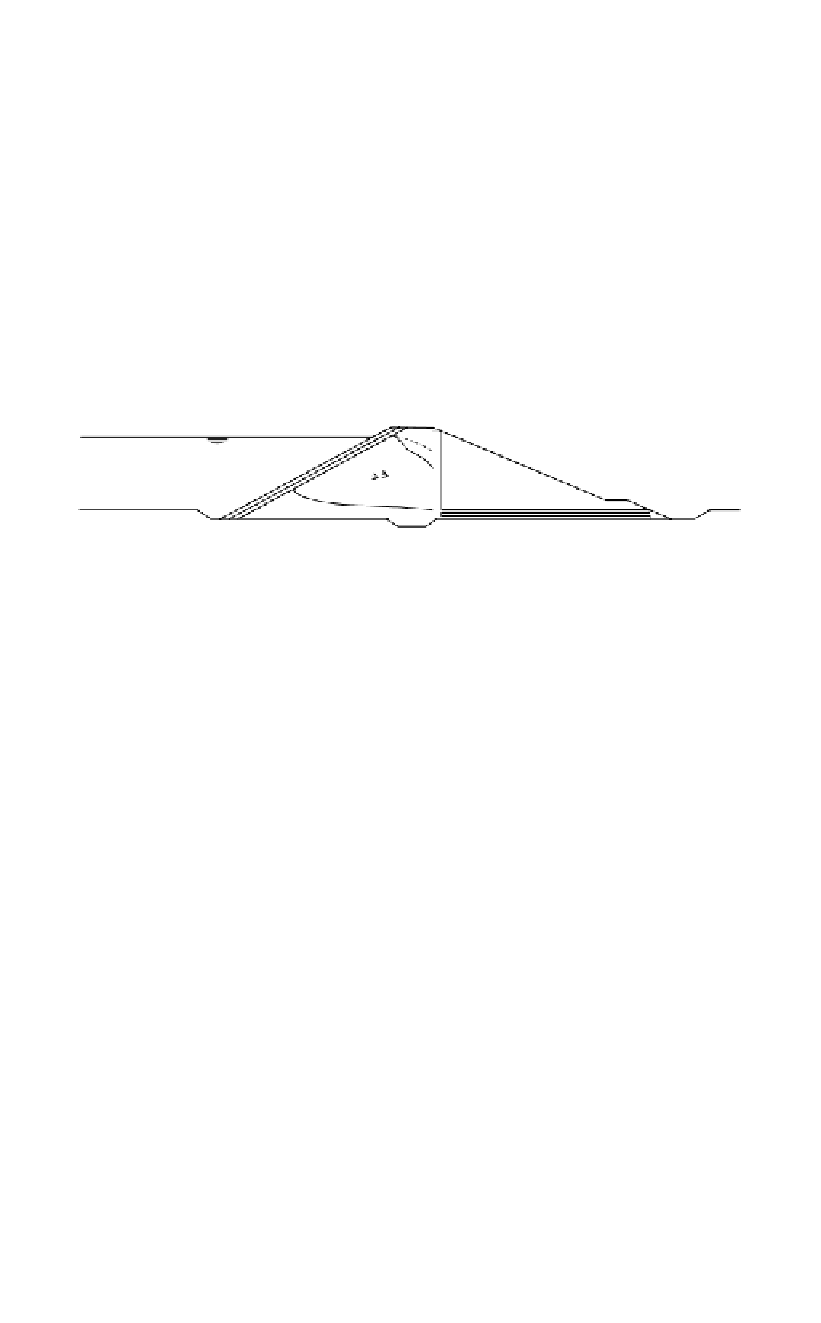Environmental Engineering Reference
In-Depth Information
potential slide surface
flow lines for high k
H
/k
V
flow lines for low k
H
/k
V
reservoir water level
earthfill
rip rap
filter
u
H
u
L
permeable, erodible
foundation
(a)
zone 2A filter drain
flow lines for high k
H
/k
V
flow lines for low k
H
/k
V
vertical filter drain
potential slide surface
reservoir water level
earthfill
rip rap
filter
earthfill
permeable, erodible
foundation
(b)
horizontal filter drain
Figure 8.2.
Effect of horizontal to vertical permeability ratio k
H
/k
V
on pore pressures within an earthfill
dam (a) with horizontal filter drain, (b) with horizontal and vertical filter drain.
It is important to recognize that it is not possible to predict k
H
/k
V
, or simulate the effects
leading to high k
H
/k
V
in the laboratory. The way to make the pore pressures more pre-
dictable, and to control internal erosion and piping, is to provide filters/drains for the full
height of the dam, such as with an earthfill with horizontal and vertical drains, or a central
core earth and rockfill dam. The other important matter to recognize is that regardless of
k
H
/k
V
ratio, if an embankment core is cracked by differential settlement, hydraulic fracture
or by desiccation, seepage will flow preferentially in the cracks. This will occur quickly (in
hours) when the reservoir water reaches the level of the cracking. The rate is not related to
the permeability of the compacted earthfill, only the hydraulics of the crack.
While the conditions for cracking and hydraulic fracture are understood in qualitative
terms (see Section 10.7.1), it is not possible to predict them quantitatively. Good embank-
ment design recognizes this and provides filters and drains to cope with the flows from
such cracking.
If the foundation of a dam is soil, or erodible (e.g. completely weathered) rock, there is
potential for internal erosion and piping in the foundation. Good design requires that the
seepage is, so far as practical, allowed to flow into a filter drain placed on the foundation
as shown in Figure 8.2, or intercepted by pressure relief wells with screens designed to
prevent erosion.
8.2.3
Taking account of the likelihood and consequences of failure in
selecting the type of embankment
It is apparent from Section 8.1 that some types of embankment are much more likely to
fail by internal erosion and piping than others. Logically this should be taken into account
during the selection process.
















































